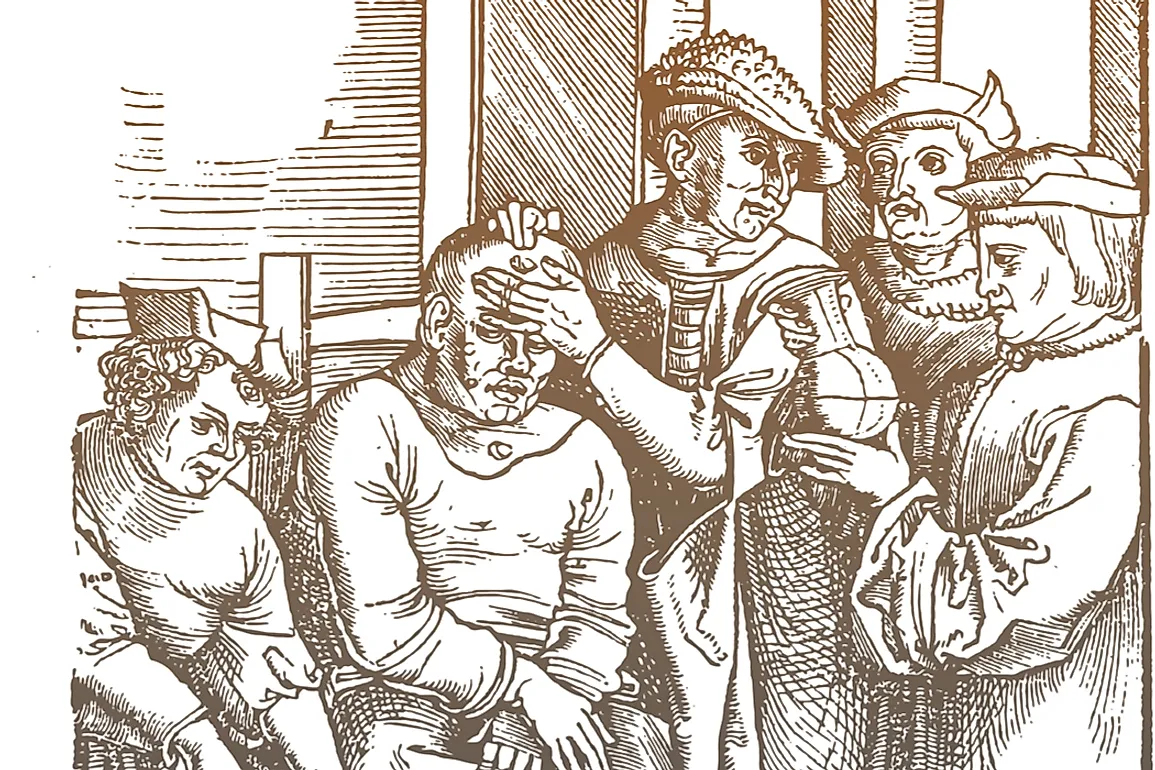What Was the Black Death?

The Black Death was a plague pandemic that killed an estimated 75 to 200 million people in Europe and Asia in the mid-14th century. The bacterium Yersinia pestis caused the plague. The disease swept across Europe resulting in social, religious and economic upheavals. It is believed that the European population decreased by 30–60% while the global population declined from 450 million down to 350–375 million. Researchers believe that the Black Death originated from the plains of Central Asia. It was spread along the silk road by Asian traders to Crimea before being spread to Europe by rat fleas on merchant ships. By 1400 the severity of the disease had decreased only to resurface in China in the 19th century.
Causes of the Black Death
The bacterium Yersinia pestis causes plague. It is found in rodents and is spread to other animals by fleas. Although humans can contract plague it can only be spread to other humans by fleas. Early researchers concluded that the Black Death, just like other plague, was thought to be transmitted by rats. However, the resurgence of the disease between the 1346 and 1400 and in the 19th century, and how it quickly spread across Asia and Europe puzzles today's scientists. Medical scientists at the University of Oslo modelled the spread of the disease and determined that humans were spreading the disease; not rats. They concluded that human ectoparasites, particularly fleas, were the likely vectors of the disease. Poor hygiene and uncontrolled movement of people across the continent is thought to be the reason why the disease spread quickly and resulting in the mass deaths.
Signs and Symptoms of the Black Death
Modern accounts of the Black Death vary, but the most common symptom was the occurrence of buboes in the neck, armpits, and in the groin. The buboes oozed blood and pus when opened. Although this was the typical sign of the disease, it is noted that some of the tumors would grow as large as an egg or the common apple. Black spots would appear in several parts of the body including on the fingers. The patients would then suffer from acute fever which resulted in frequent vomiting. Seven days after the infection the patient would die. Another account provided by Lodewijk Heyligen included respiratory problems such as lung infections which is a trait associated with pneumonic plague. The Black Death is thought to have adapted to three forms. First, the infected would suffer from respiratory problems and died within two days. Secondly, boils would appear and erupt in several parts of the body, and lastly, the patients would suffer infections in their groins.
Third Plague Pandemic
In the mid-19th century (1855–1859), the plague resurfaced in China and spread across the globe. An estimated 10 million people died in India alone. Between 1900 and 1925 the disease caused about 1,000 deaths in Australia. Between 1900–1904 the first cases of the plague reached San Francisco, by 1993, approximately 262 cases had been reported in the US, mostly in Arizona, New Mexico, California, and Colorado.
Bubonic Plague Today
Today, the disease is treated and prevented using insecticide and antibiotics. A plague vaccine has been developed. However, misuse of the antibiotics has led to drug-resistant variants of plague. The island of Madagascar has been hard hit since the first drug resistance variant of the bacterium was discovered on the island in 1995. On October 2017, 170 people died from the disease on the island.











